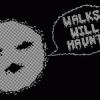
Twins Video
MOST.
PRODUCTIVE.
OFFSEASON.
EVER*.
You hear that pitchers? Print the World Series tickets now. Plan the parade route. Chisel Mauer’s bust on the MVP trophy. Start the...hold on. Apparently last year Mauer told the Pioneer Press that that winter “has been a very productive offseason” and that offseason’s labor resulted in one of his worst offensive years in his career (outside of his injured 2011). So, wait, are words just meaningless?
The accusation here is not that Mauer did not work out and prepare to his fullest ability heading into 2014, but rather something was off which led to the low offensive output relative to his lofty standards. Reviewing his season, there are several notable factors that chipped away at his usually pristine BABIP and eroded his on-base percentage.
The Outfield Shift
The first was that other teams were positioning themselves to account for Mauer’s opposite field tendencies. Over the last three years his batting average on balls in the air had never dropped below .400 when going the other way and wound up at .330. Still very good overall but that is several fewer hits nonetheless.
No Hits To The Right
Second, Mauer’s ability to get hits when pulling the ball completely fell apart. Again, part of this goes back to the defensive alignment because -- as you can glean from the chart below -- a limited numbers of balls actually got out to the right field area and this allowed the right fielder to shift around. On the other hand, Mauer’s ground ball tendencies when pulling makes for some very busy infielders. From 2009 to 2013, he held a respectable .279 batting average on balls in play on anything he yanked but that dropped to .207 in 2014. The average left-handed hitter was about to post a .289 BABIP when pulling.
The Whiff
The last is his increased strikeout rate. Since 2009 the percent of plate appearances in which he has struck out has gone from 10% to 9% to 11% to 14% to 18% to, finally, 19%.
One reason for those increasing rates is a growing number of strikeouts looking. From 2009 through 2011, he struck out looking 27 times total but from 2012 through 2014, he has watched strike three go by 63 times. On the rising figures, Mauer told Pioneer Press’s Charley Walters this year that he attributes it to the umpire’s expanding zone and he’s not wrong. According to Jon Roegele’s research at HardballTimes.com the zone has been fattening up the past six years, particularly in the lower regions of the zone. In spite of having always been in the zone, suddenly pitches that were called balls in 2011 for Mauer are considered strikes in 2014.
Of course, that doesn’t explain the rise in strikeouts swinging -- or maybe it does to some degree. Mauer has always been one of the game’s most calibrated individuals and the shifting strike zone may be messing with that aspect. It is possible that Mauer's transition away from catcher has affected his zone calibration as the umpires began to call lower and lower strikes.
Adding and Subtracting Speed
Here is another data nugget that could be influencing the outcomes mentioned above. Looking at pitch sequencing, an interesting trend for Mauer stands out: When pitchers added and subtracted speed, he struggled mightily last year.
This is not a new wrinkle opponents are challenging him with, but now the results are significantly different. For example, from 2009 to 2013, when pitchers followed a fastball with a change-up, Mauer hit .274/.318/.377 on that pitch. Meanwhile in 2014, he turned in a .143/.172/.179 line. On the other hand, if a pitcher tried to go with a fastball after a change Mauer hit .451/.521/.697 from 2009 to 2013. Last year Mauer went just .111/.200/.111.
Naturally this is presented with the small sample size caveat. However, this is an unusual trend for Mauer over the course of the last six years of data. In no other cases did he have any issues in sequencing. It is as if pitchers have figured out a way to throw him off-balance.
****
To be fair, Mauer’s offensive numbers were better than the average but deviated from his typical norm. His on-base percentage was still in the top 20 in the league and his OPS+ remained above the league’s average too. Sometimes being critical of Mauer’s performance feels like saying a girl is too pretty.
Overall, his contact has been inferior this past year as well. His hard-hit average (.182) hit a six-year low as did his fly ball/line drive distance rate (275 feet), while his foul ball rate hit a high in that time. His in-play percentage was also a new low. In short, he did not make the same high quality contact as he had made in previous years. Part of that may be because he was trying to adjust to the defense or the expanding strike zone while trying to time the pitchers’ offerings. Beyond these elements, Mauer may have been hindered by injuries, age or other things that we cannot know (like perhaps the fumes from his new first baseman’s mitt causes dizziness).
We know a lot about what went wrong in 2014 for Joe Mauer. What is unknown is whether this decline is a growing trend or a passing phase.
*“in a long time.”
MORE FROM TWINS DAILY
— Latest Twins coverage from our writers
— Recent Twins discussion in our forums
— Follow Twins Daily via Twitter, Facebook or email
— Become a Twins Daily Caretaker









Recommended Comments
Join the conversation
You can post now and register later. If you have an account, sign in now to post with your account.
Note: Your post will require moderator approval before it will be visible.